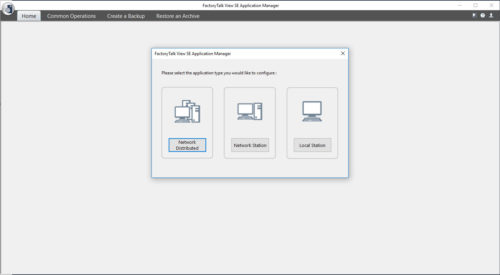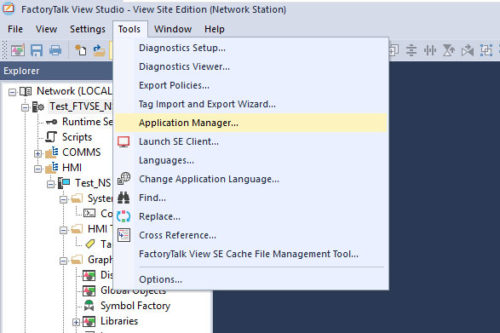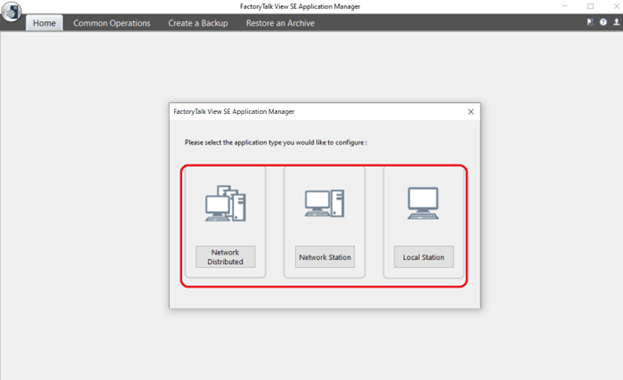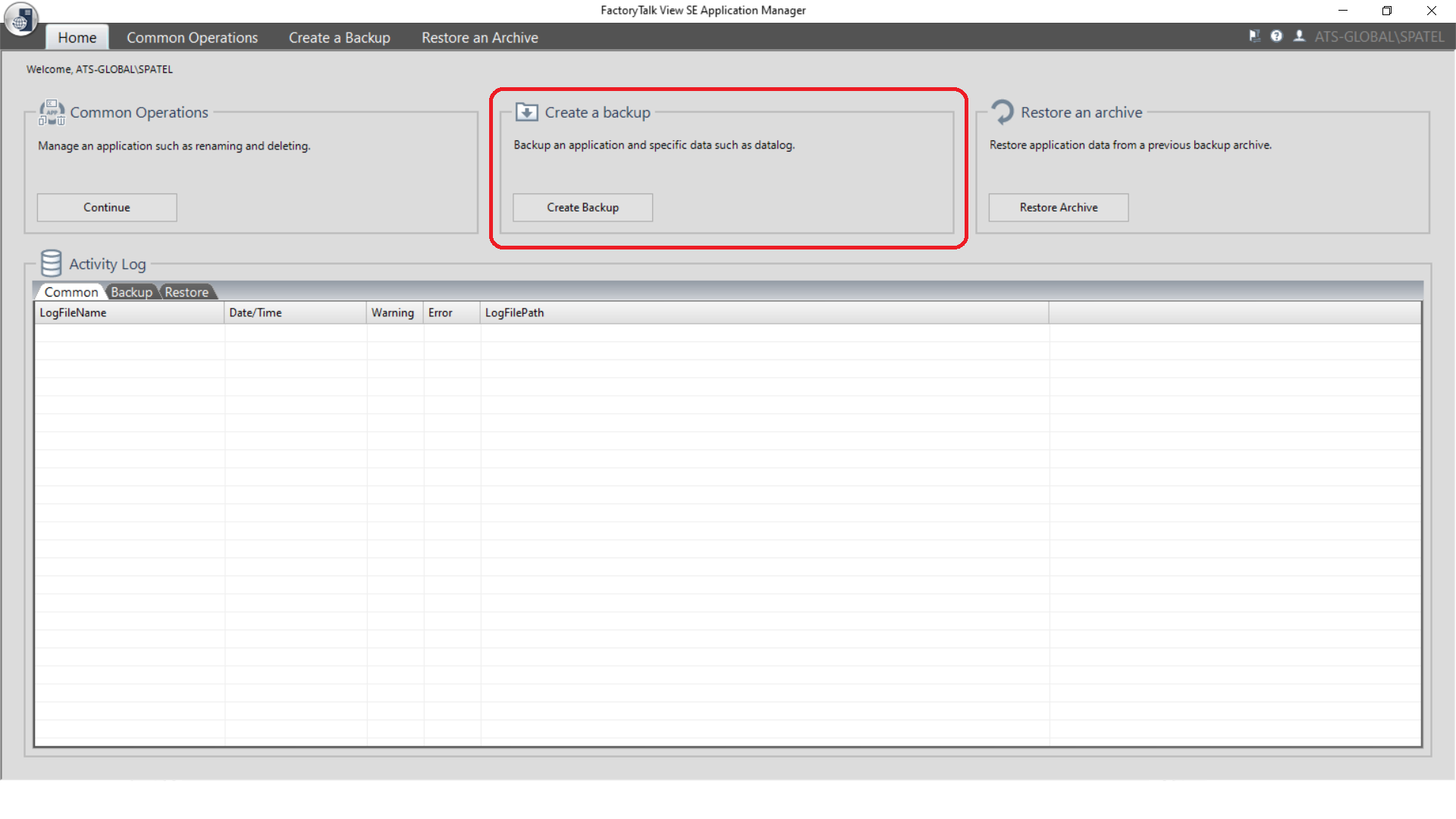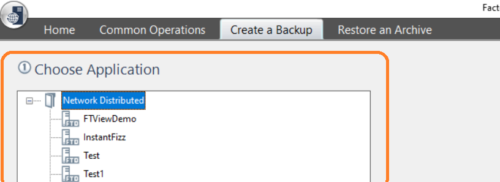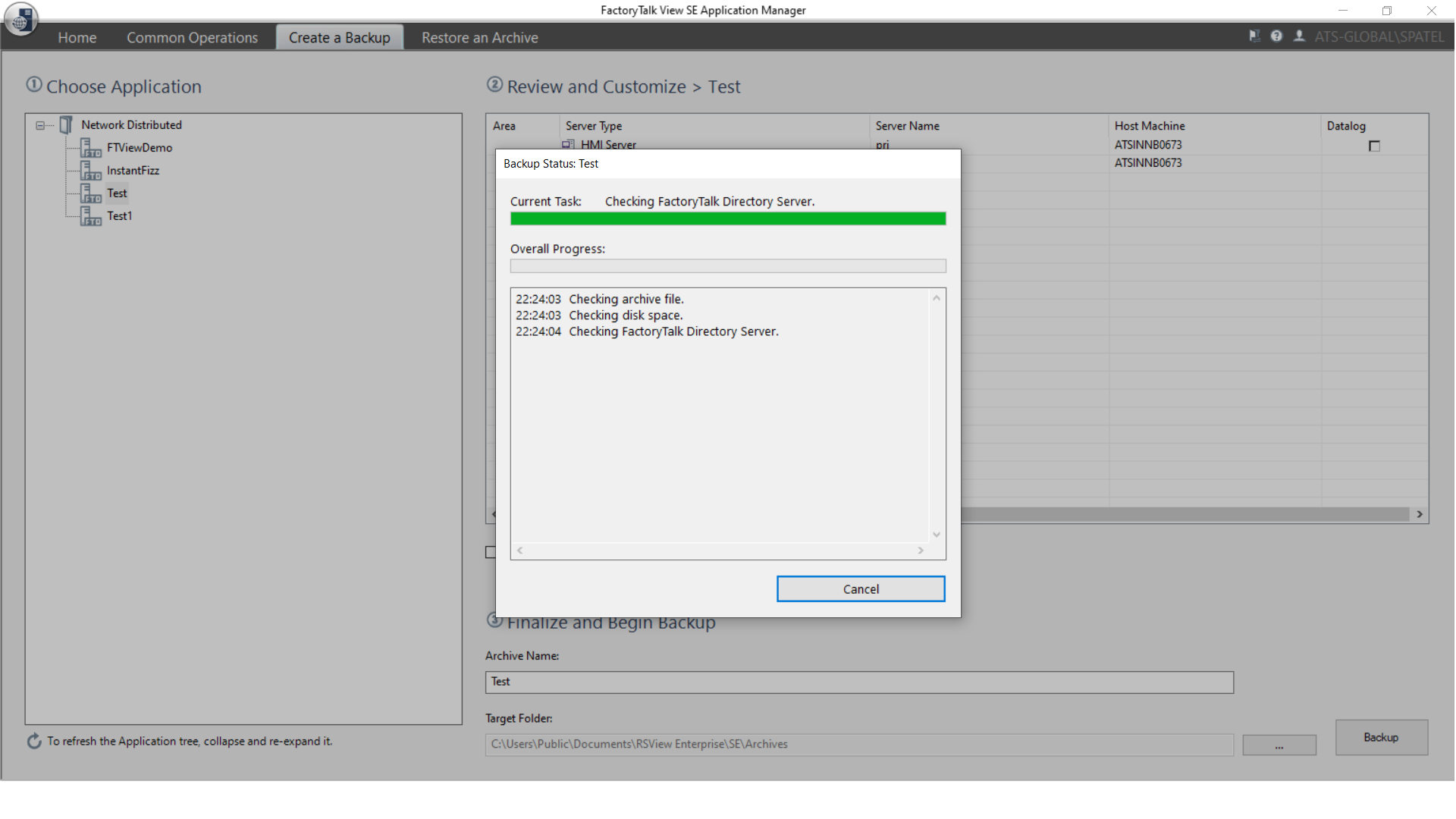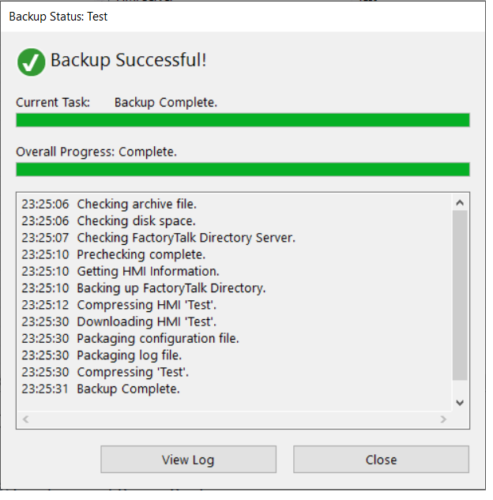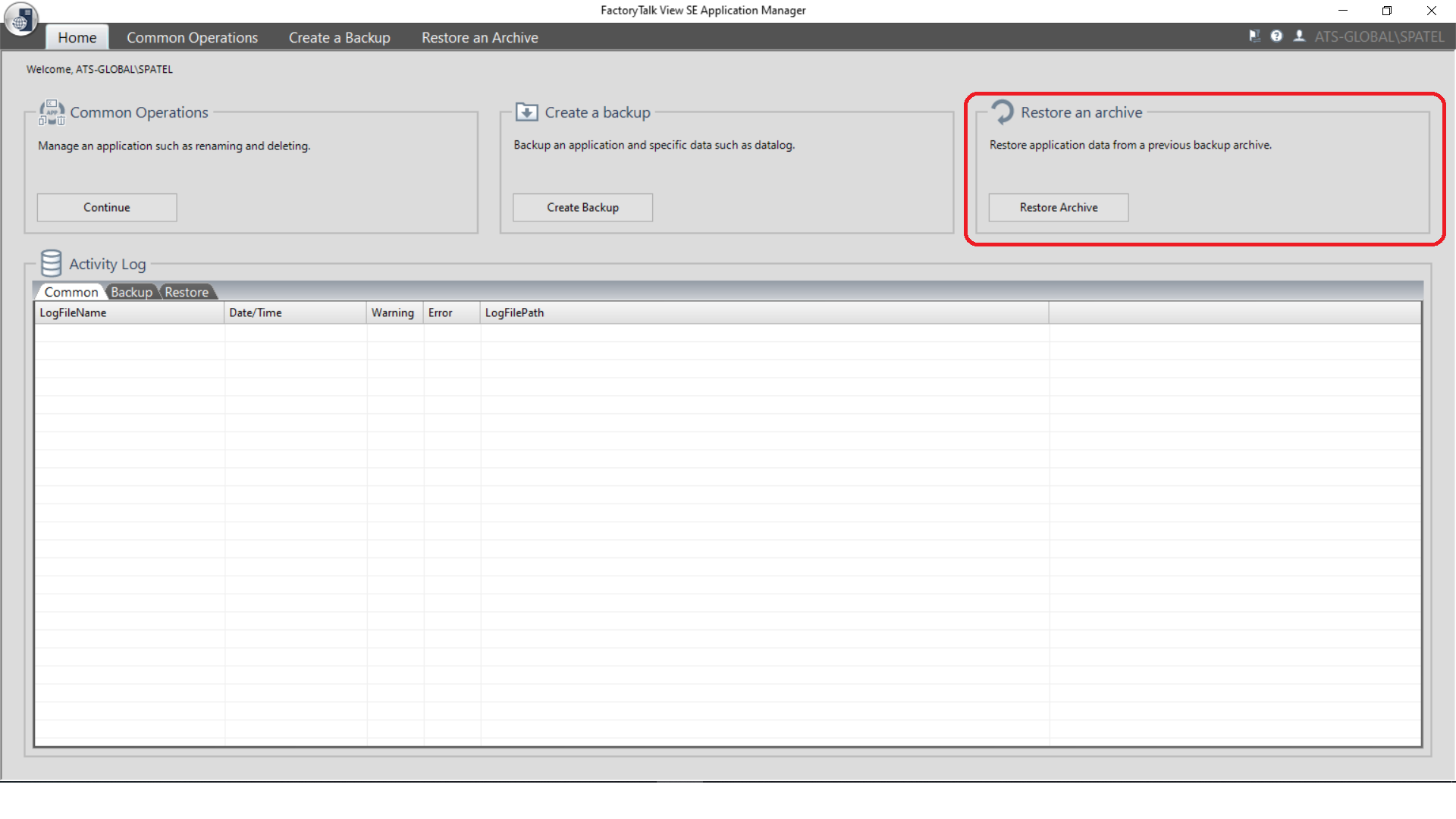
In this article, we will learn to take backup and restore the same project in the Factory Talk View SE application.
We all know how important it is to take backup for quick recovery from any disaster, and today we’ll review how to do so with the latest version of FactoryTalk ViewSE, version 13.
Backing up a Project
To take backup of your existing or any other project, you require an application named “Factory Talk View Application Manager”.
Note: In the current version, the FTViewME Application Manager has been migrated to a separate application, and if you have an existing shortcut it will launch the “ViewME Only” version. You can launch the new VeiwSE Application Manager from the ViewStudio Tools menu as shown below – Ed.
When you opening the ViewSE Application Manager you will see the below pop-up to select your project from.
Here, you have to select the application type in which you have created your project.
As my project is in the “Network Distributed” application, I have to click on this to open the next screen.
Here as you can see above screen, to take a backup you have to click on “Create Backup”
Clicking on Create Backup will open the below screen where you can see projects you have created in the Network Distributed Application type:
Here, Test and Test1 are the projects which I created for testing purposes.
Now you’ll want to click on the project you wish to create a backup for, which in my case is the “Test” application.
Now you’ll see the following window:
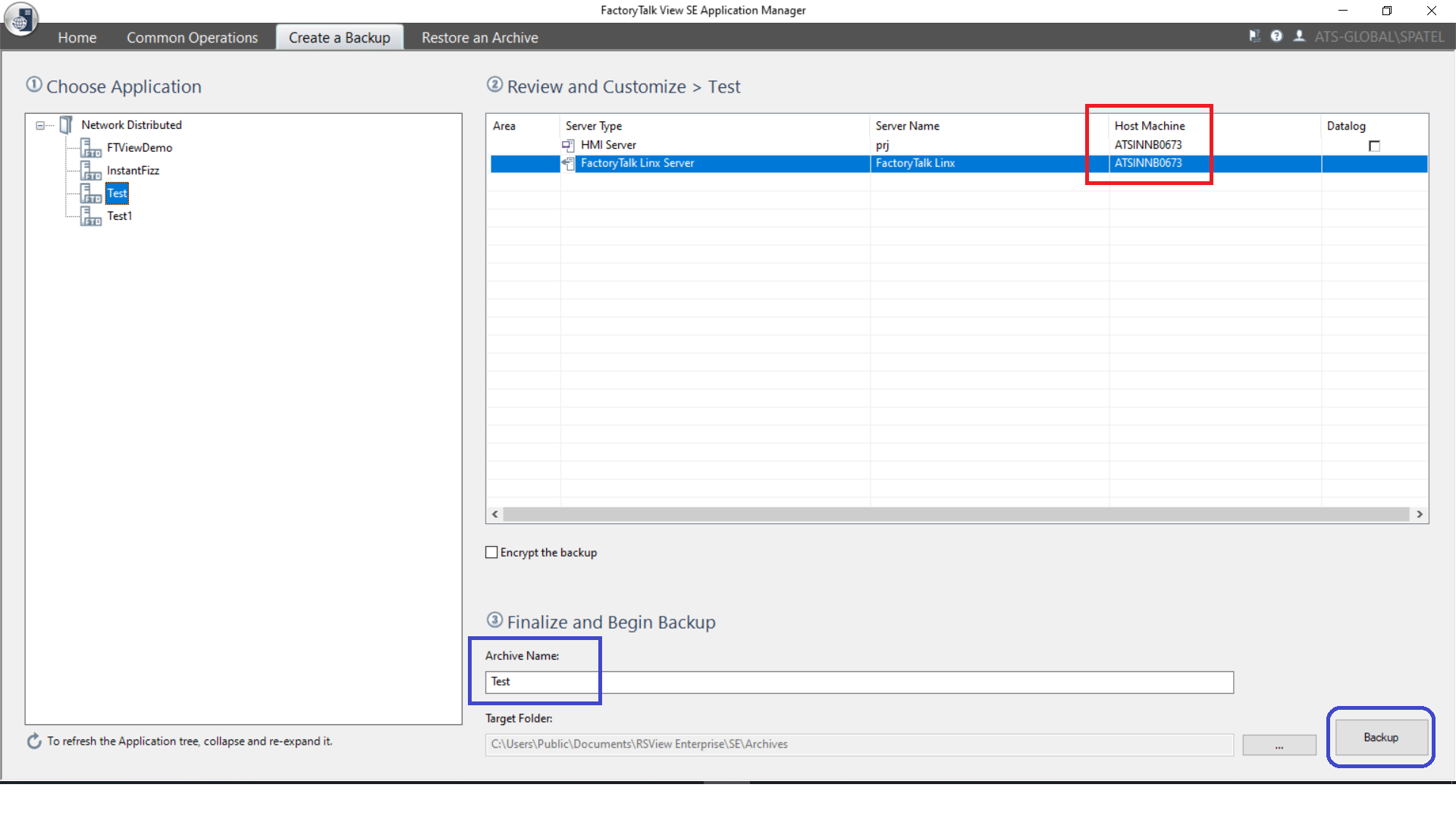 In the red square above you can see the name of your system in which you are taking backup. Remember, if your system is on a network with multiple system names you need to choose the right system.
In the red square above you can see the name of your system in which you are taking backup. Remember, if your system is on a network with multiple system names you need to choose the right system.
You can give a meaningful name in the “Archive Name” to keep things simple.
Then select the Target Folder to store the backup.
Finally, click on the “Backup” button to start the backup process. If your system name is wrong, then your backup will fail.
Your backup is now in process.
On completion, you will see the above attached pop-up showing a successful backup created.
Restoring a Backup
To Restore the Backup, you have to open the same application which you have opened for taking backup.
In this example I have a backup created for a “Local Station” project that I will show you to restore.
First Open “Factory Talk View Application Manager” and open “Local Station:”
Next, click on “Restore Archive” to proceed with the Selection of the Project.
The following window will open. Here, you have to choose a path for your backup to restore.
In my example my project is named “Test,” so I will proceed with this name.
Clicking on Test will open up a window on the right side as you can see below the image:
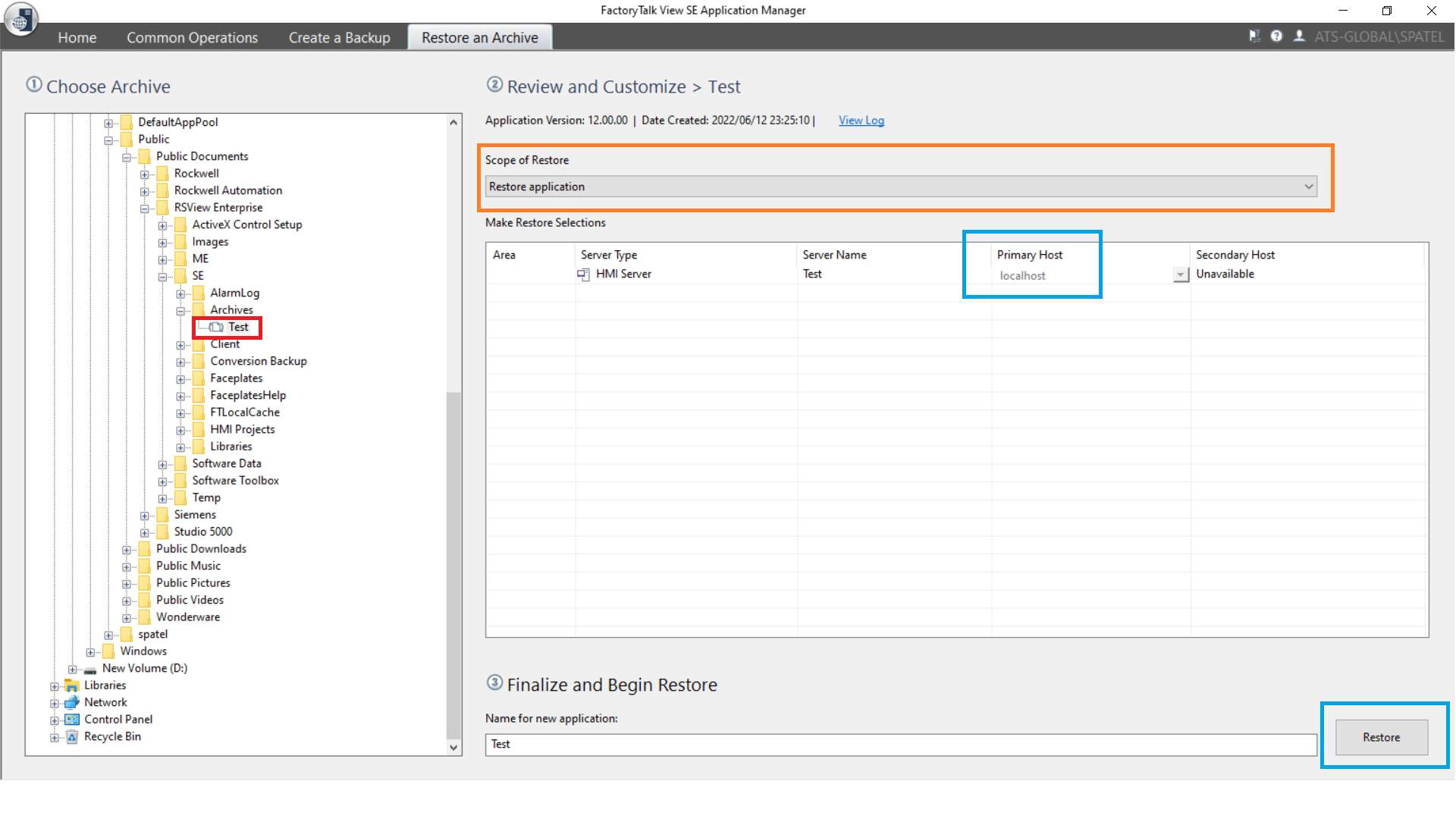 First, choose “Scope of Restore” as the restore application.
First, choose “Scope of Restore” as the restore application.
Secondly, keep in mind the “Primary Host” which is the name of your system, or if you have selected as localhost, it will come as localhost.
In this example it is showing localhost because we are restoring applications from Local Station, as opposed to a Distributed Application.
Additionally, if your project contains Data, Alarm, and/or Tag Servers, it will also show in the list to restore.
Note that if you are restoring a project from the Network Distributed Application, you may see multiple options to choose from in the “Primary Host” field.
Now select your system name to restore it to, and click on “Restore” to start restoring the backup.
Soon, you will see a pop-up showing “Restore Completed Successfully,” as you have seen for creating a backup.
Note: For any application type, the procedure of taking backup and restoring will remain the same.
Hope you will find this article informative and useful.
Written by Suhel Patel
Automation Engineer and Freelance Writer
Have a question? Join our community of pros to take part in the discussion! You'll also find all of our automation courses at TheAutomationSchool.com.
Sponsor and Advertise: Get your product or service in front of our 75K followers while also supporting independent automation journalism by sponsoring or advertising with us! Learn more in our Media Guide here, or contact us using this form.
- View Studio Site Edition – Client Keys - October 21, 2022
- View Studio Site Edition – Parameter Passing - September 20, 2022
- View Studio Site Edition – Alarm and Events: Export, Edit, and Import - August 9, 2022

Discover more from The Automation Blog
Subscribe to get the latest posts sent to your email.


